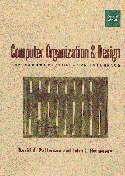Run the simulator on fact.s
by typing:
pandora% spim -file fact.s
(You should type 4 (carriage return) at the prompt;
then the program will calculate and print 4! or
24.)
Next use the xwindows (interactive)
version of spim, by typing:
pandora% xspim -file fact.s
When the simulator comes up, you can click on run
to execute the entire program. After clicking on ok,
you will get the same prompt in a new window as before.
After entering 4 followed by Return,
the program will respond with
24 just as before. Finally click on quit
(twice).
It is more interesting and useful to execute one instruction
at a time: after invoking xspim, click on
step instead of run.
In the small prompt window, you should keep clicking on step
to execute one MIPS instruction at a time.
After 4 steps, you will next execute the instruction
jal 0x0040020 [main], followed by the
first actual instruction of the fact.s program:
addu $s7, $zero, $ra, which appears
as addu $23, $0, $31 in the xspim
window.
Continue stepping. When you execute the first syscall
MIPS instruction, a window with an Enter n: prompt will appear.
After executing the next syscall
type 4 and Return as before.
Then after over 66 more steps, the program will eventually
respond with the value 24 and then a newline.
(You must enter the 4 and return immediately
after stepping through the second syscall instruction.)
